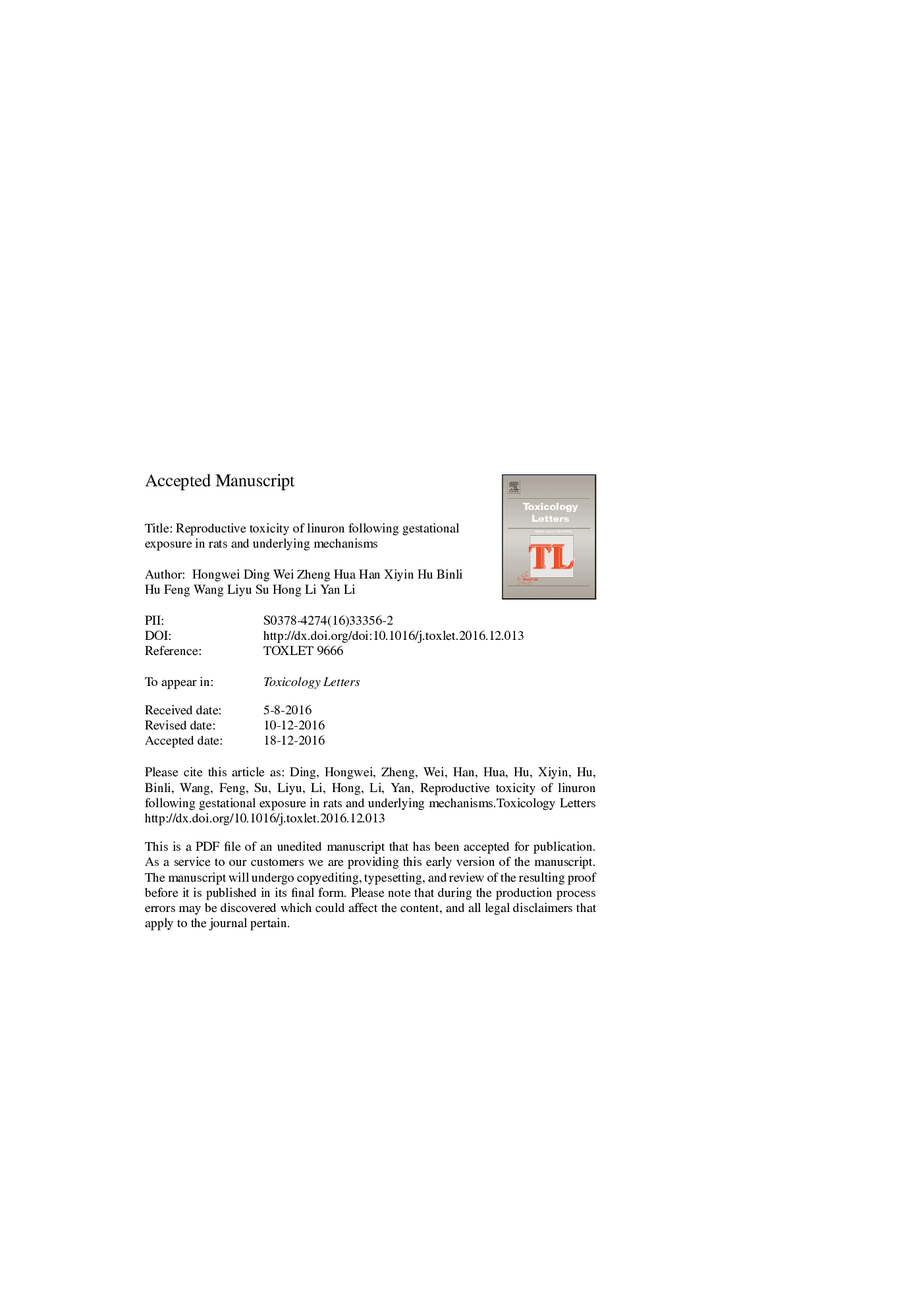| کد مقاله | کد نشریه | سال انتشار | مقاله انگلیسی | نسخه تمام متن |
|---|---|---|---|---|
| 5562201 | 1562607 | 2017 | 29 صفحه PDF | دانلود رایگان |
عنوان انگلیسی مقاله ISI
Reproductive toxicity of linuron following gestational exposure in rats and underlying mechanisms
ترجمه فارسی عنوان
سمیت باروری لینورون پس از قرار گرفتن حاملگی در موش صحرایی و مکانیزمهای زیر زمینی
دانلود مقاله + سفارش ترجمه
دانلود مقاله ISI انگلیسی
رایگان برای ایرانیان
کلمات کلیدی
موضوعات مرتبط
علوم زیستی و بیوفناوری
علوم محیط زیست
بهداشت، سم شناسی و جهش زایی
چکیده انگلیسی
Linuron is a widely used herbicide in agriculture; its endocrine disruptive toxicity has recently received public attention. This study was designed to examine the developmental toxicity of linuron on the reproductive system of male offspring following maternal exposure. Mother rats received oral gavages of linuron, once daily, at the dose of 0, 50, 100, 150 or 200 mg/kg, from gestational day (GD)13 to GD18; gonadal organs from GD20 fetuses were examined. Data indicated that exposed male offspring had a significantly shortened anogenital distance. Pathological examination further revealed a lack of fusion in the urogenital fold in treated fetuses, the damaged seminiferous tubules, and the injured Leydig cell ultrastructure. Analysis of serum testosterone concentrations at postnatal day (PND)2 showed a significant dose-related reduction (about 33.7-58.75%, r = â0.838, p < 0.05) as compared to controls. Immunohistochemical results demonstrated a significantly reduced expression of enzymes pertinent to the testosterone production including P450scc, 3β-HSD, and PCNA in Leydig cells (p < 0.05). qPCR studies confirmed decreased levels of mRNAs encoding P450scc, 3β-HSD and PCNA (p < 0.05). Taken together, these data suggest that maternal exposure to linuron hampers the male gonadal organ development; this appears to be due to linuron's direct action on the production of testosterone in fetal and postnatal offspring.
ناشر
Database: Elsevier - ScienceDirect (ساینس دایرکت)
Journal: Toxicology Letters - Volume 266, 15 January 2017, Pages 49-55
Journal: Toxicology Letters - Volume 266, 15 January 2017, Pages 49-55
نویسندگان
Hongwei Ding, Wei Zheng, Hua Han, Xiyin Hu, Binli Hu, Feng Wang, Liyu Su, Hong Li, Yan Li,
